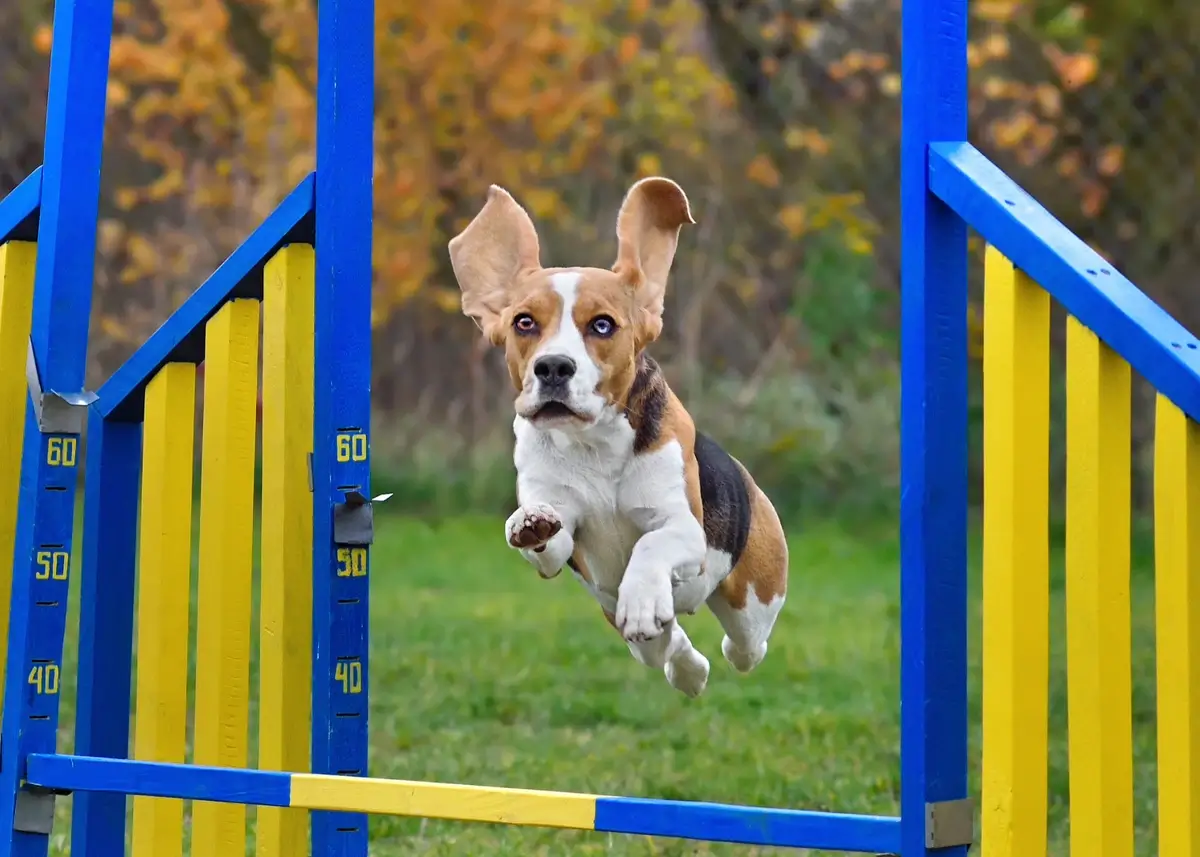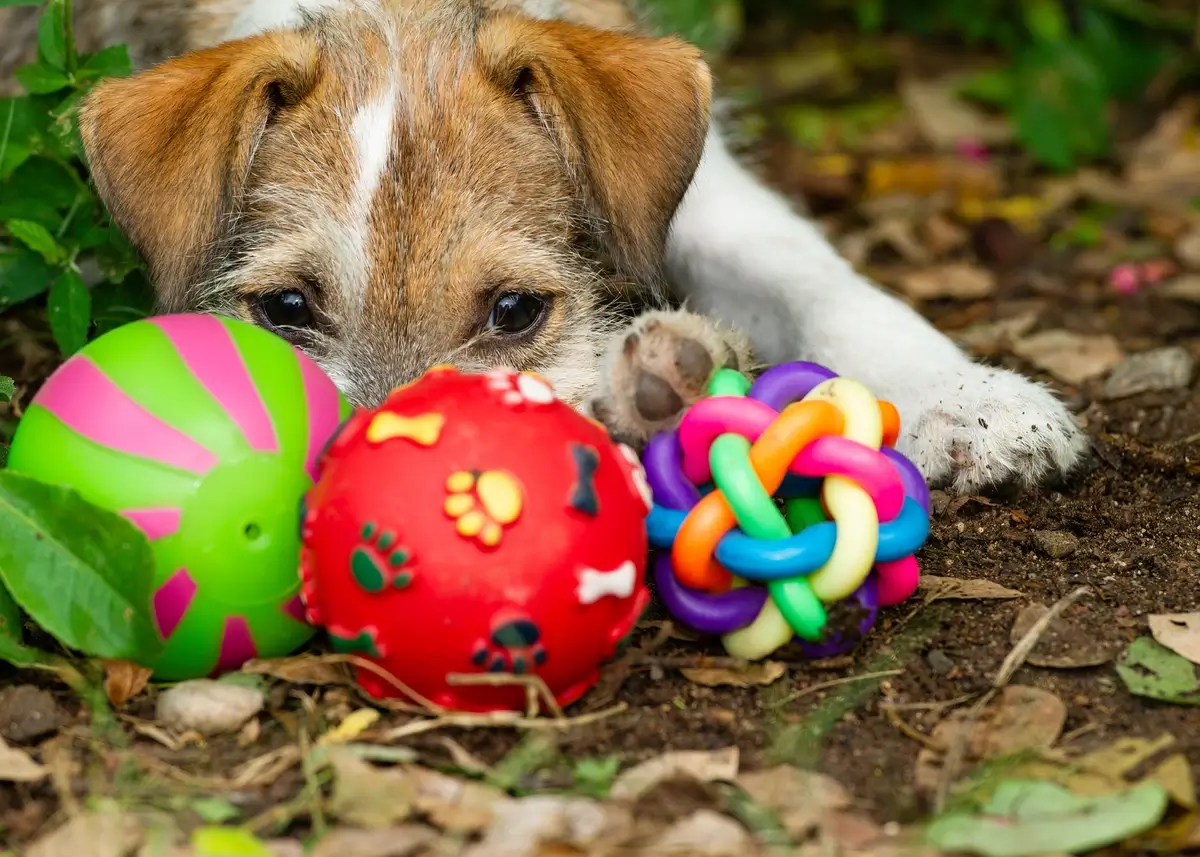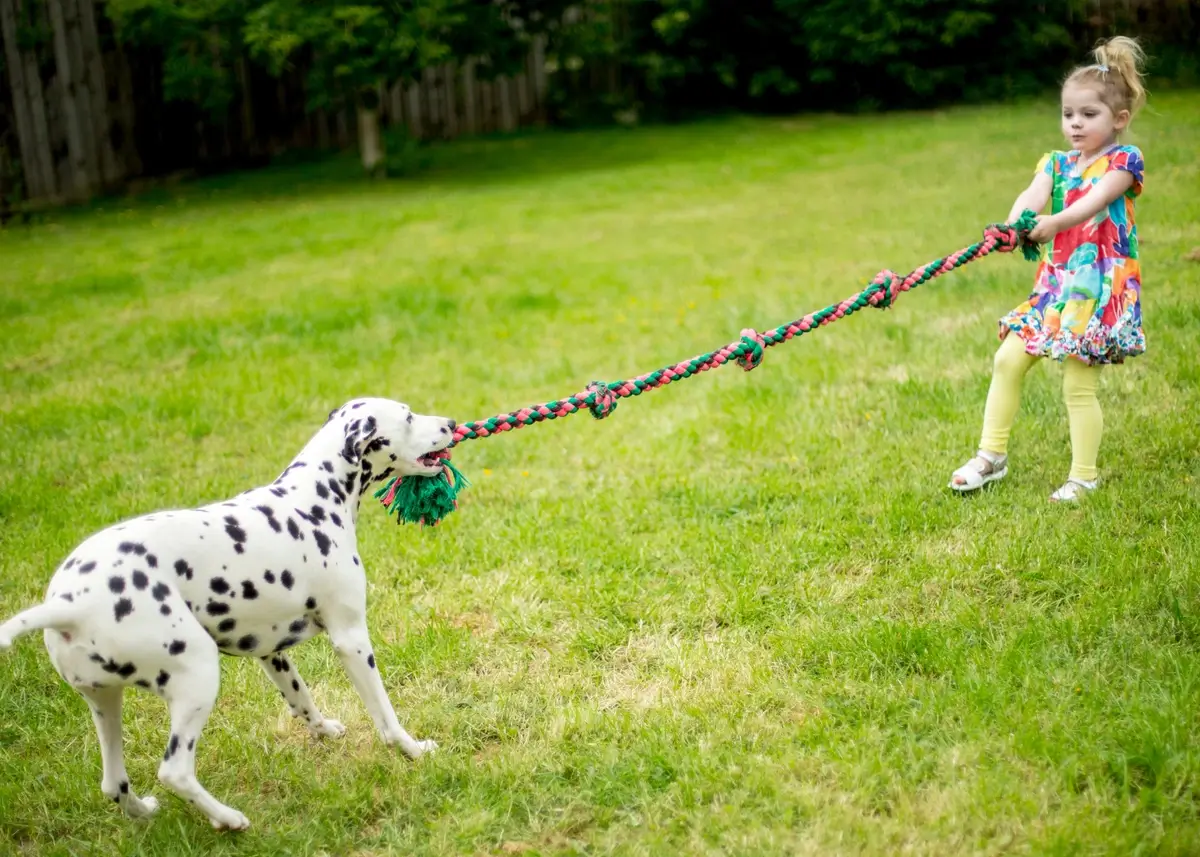Our furry friends depend on us for food, shelter, and physical well-being. We make sure they have nutritious, high-quality puppy food, a comfortable, safe place to dream, and plenty of physical exercise. We place them under the care of a qualified licensed veterinarian to prevent diseases and get the medical attention they need.
However, the picture isn’t complete without providing your puppy mental stimulation from the moment he or she joins your family. Learn about dog mental stimulation, why it is important, and how to mentally stimulate your dog to keep your pup healthy overall.
Why is Mental Stimulation for Dogs Important?
“Mental stimulation” is any activity that makes your dog think in new ways often engaging as many of the five senses as possible, solving a problem, or exposing your puppy to novel experiences. If you want to raise a happy, healthy puppy, you have to give lots of opportunities for mental stimulation to your puppy. Scientists have shown through countless studies that mental exercises for dogs have a myriad of benefits that must not be ignored.
As a dog owner, you should prioritize mental stimulation for your dog for the following reasons.
Curbs behavioral problems
A properly mentally stimulated dog is more likely to be a well-behaved dog. In contrast, bored, anxious dogs will leave it up to themselves to find activities such as digging, excessive chewing, and property destruction – definitely not what humans want!
According to Sonntag & Overall from the Department of Companion Animal Clinical Studies at the University of Pretoria, “a lack of mental stimulation in dogs may lead to decreases in behavioral flexibility and promote reactivity or depression” (2014). None of us want our puppies to experience depression!
Good for their brains
Mental stimulation for dogs keeps your dog’s brain engaged and allows them to actively practice their natural problem-solving abilities. New encounters and challenges will keep those synapses firing and build neurological pathways.
Cuts down on aggressive behavior
When you provide opportunities for your puppy to socialize with other dogs and humans, they learn unspoken rules of proper interaction and how to function within their environment. However, if dogs never get to be around other people or dogs, the more likely it is that your puppy will behave aggressively toward strangers, children, and other dogs.
Prevents rehoming
When a puppy does not receive any mental stimulation, he or she can begin exhibiting a host of problems that can cause an owner to surrender a dog to a shelter. Approximately 3.9 million dogs are abandoned or given up to shelters yearly in the United States alone. It’s not fair for a dog with the potential to be a great pet to instead end up in a most unfortunate situation just because its owner did not take dog ownership seriously by providing mental stimulation for dogs.
Promotes a dog-owner bond
Spending quality time with your pup is just one of the ways to show your dog you love them. Dogs love seeking approval from and pleasing their owners, and a happy dog is more likely to obey your commands (and less likely to get into trouble in the first place).
Combats the effects of canine aging
Mental games can awaken inactive parts of a senior dog’s brain and sharpen their minds. In 2018, research scientists from the Messerli Research Institute in Vienna taught a group of senior dogs to play a puzzle game involving a touchscreen. They found that the combination of sight, scent, and spatial orientation required to solve the puzzle helped make connections between different parts of the brain, a component crucial to a senior dog’s well-being.
How Much Mental Stimulation Does a Dog Need?
The short answer: It depends on your dog.
The longer answer is that several factors go into knowing how much mental stimulation to give your dog, including his or her innate energy level, breed, intelligence level, age, and current health.
While all dogs need some type of daily interaction, some breeds with higher energy levels, such as Australian Shepherd puppies, Blue Heeler puppies, or Labrador Retriever puppies need a lot of activities to choose from before they become bored and act out. Other low-key breeds, such as English Bulldog puppies or Basset Hound puppies, are totally content hanging out on the couch all day after a short walk or game of fetch and may give you the side-eye stare if you pull out the puzzle toy for the second time that day.
We all like to think our dog is the smartest dog around, but let’s be honest – some dogs really are smarter than others and require more mental stimulation to satiate their curiosity. Breeds like Border Collie puppies, German Shepherd puppies, and Standard Poodle puppies should be provided with an array of mental stimulation opportunities several times a day adding up to at least a few hours. Most other dogs are good with a few sessions to get their brains active.
Based on your dog’s needs and personality, it’s up to you to determine the right amount of mental stimulation. Assess the current level you give to your puppy and make adjustments as needed. Mental stimulation for puppies is just as important as physical activity, so finding that sweet spot keeps everyone happy.
17 Ways to Give Your Dog Mental Stimulation
1. Give treat dispenser toys
Who doesn’t love a tasty snack? Why don’t you make your dog work for it though by placing treats inside a specialized toy? A Kong toy filled with peanut butter keeps your dog busy and happy while also satisfying its need to chew on something indestructible.
2. Use snuffle mats
A snuffle mat is a sturdy mat with raised rubber or fabric that can contain small bits of treats. A dog uses its powerful sense of smell to root out treats. It stimulates their instinct to hunt and forage for food and rewards their olfactory curiosity with a delicious reward.
3. Play a game of hide-and-seek
Teaching your dog to play hide-and-seek is wildly exciting for your puppy. You can either hide a favorite toy, a treat, or even a person in another room. Be sure to switch up hiding places. Reward your dog handsomely when they find what they’re looking for!
4. Teach toy names
Does your puppy know the difference between “Get your bone” and “Get your ball?” If not, why not teach them to differentiate one from the other? Find some tasty treats and start with one toy. Once your dog learns one object, move on to another. Then let them choose between Toy A and Toy B to see if they get the quiz correct.
Forget knowing the words to two toys – how about knowing the names of hundreds and hundreds of toys? A Border Collie named Chaser was able to correctly identify over 1,000 toys on command and was found by researchers to have the vocabulary of a 3-year-old child. Now that’s one mentally stimulated puppy!
5. Buy a fun interactive toy
An interactive toy for dogs that allows them to solve a problem by their own actions provides a challenge they won’t get with a simple ball. These types of toys can also keep your puppy occupied while you do other things.
6. Rotate your dog’s toys
There’s no need to keep all your dog’s toys out. Your dog can become overwhelmed with all the choices or even bored with a huge selection. Instead, pick out a few current favorites and store the rest. Rotate toys every few weeks or whenever your puppy appears to grow bored with the selection. “New” toys keep their curiosity high and your puppy entertained.
7. Make your own interesting dog toys
You don’t have to spend a lot of money on elaborate dog toys for mental exercise to keep your puppy occupied. Consider having some fun one afternoon creating your own homemade DIY mentally stimulating puppy toys and games. Most can be made with items already lying around your house!
8. Go on a “sniff walk”
Taking your puppy on a walk can be a great way to leash train your dog with simple commands and tasty treats. However, you can give your dog the day off by allowing them to go on a sniff walk, even if you use the same exact same route as always.
Choosing the right dog leash for a sniff walk should provide a longer lead so your dog can roam and explore. Let your puppy take the lead and allow him or her to sniff to their heart’s content, going at their own pace. Even if it takes 30 minutes to go around the block when it usually takes 10, your puppy will be happy to have explored your neighborhood more closely.
9. Explore a new trail
Even a simple walk in a new place can be an exciting adventure for your puppy. While it’s true puppies thrive on routines, they also like to be surprised sometimes with new sights and sounds. It’s a great way to also get out of your own comfort zone and explore your local area.
10. Visit a dog park
Dog parks can be a good way for your puppy to play with other dogs and let out some pent-up energy in a secure setting. Some dog parks feature a stick library or a dedicated dog beach. Be sure to follow the local rules of the dog park to ensure everyone stays safe.
11. Try out a dog-oriented class
You can always look for dog-friendly classes and activities to experience a fun activity with your dog. Some places offer yoga with your dog, or you may find a paw print-making session at a local pottery place. A dog-oriented class is a great way for both of you to socialize, and you may even pick up a new hobby together.
12. Play a game of tug of war
Contrary to popular belief, studies have found that playing tug of war does not encourage aggressive behavior or make an owner appear weak to a dog. Instead, the benefits of tug of war with your dog include building confidence, increasing impulse control, strengthening the bond you have with your dog, and giving opportunities for positive reinforcement. Plus, it’s one of the most physical and mental ways to tire out your dog!
13. Send your dog to doggy daycare
Whether you send your puppy every day, once a week, or just once in a while, doggy daycare is a really fun way to have your dogs interact with other pups of all sizes and practice their socialization skills in a safe, controlled environment with plenty of enrichment activities.
A quality doggy daycare will help reduce separation anxiety by keeping your puppy occupied. It will provide different types of experiences and mental stimulation games for dogs not available at home, such as playing with new toys and equipment or even swimming in a pool. Your pup will come home happy and exhausted!
14. Participate in an agility course
Learning how to run through an agility course is a fantastic way for your puppy to exercise both physically and mentally, especially for high-energy and intelligent dogs. They can learn new commands, encounter objects they’ve never seen before, and wow you with how fast they can complete the course. You can visit an established agility course or make your own at home.
15. Take an obedience training class
You can indeed teach an old dog new tricks! Any dog starting with fully-vaccinated puppies up to senior canine friends can benefit from skills taught in a basic obedience class. There’s nothing cuter than a dog in a little cap and gown, is there?
16. Teach your dog novelty tricks
You should already be teaching basic training commands to your dog, but it’s fun to add novelty commands after your dog has mastered the common ones. Teaching your dog fun tricks will not only win over people but can also be built-in entertainment at your next gathering. Your dog may even win an award for the most unique dog trick.
17. A day out with your dog
Make a list of dog-friendly businesses in your town. Tire out your puppy first with some physical exercise in a new place, like on a scent walk or dog park. Next, have lunch or a drink at a dog-friendly restaurant, pub, or brewery. To end the day, let them pick out a toy at a dog-friendly business or a treat at a dog bakery and head home for a well-deserved nap!
Keep a Pawrade Puppy Busy
Now that you know all sorts of ways to mentally stimulate a puppy, why not get a puppy of your own to keep busy? We work with a variety of trustworthy breeders to provide healthy puppies for sale for people like you wanting a furever friend to play with. Contact us today!





